15 years one-stop China custom CNC machining parts factory
 127 |
Published by VMT at Apr 14 2025 | Reading Time:About 8 minutes
127 |
Published by VMT at Apr 14 2025 | Reading Time:About 8 minutes
In today’s competitive manufacturing landscape, speed and cost-efficiency are paramount. One of the most effective methods to achieve both is through rapid tooling. But what exactly is rapid tooling, and how does it differ from traditional tooling processes? This article explores the concept of rapid tooling, its advantages, limitations, and how it’s changing the way products are made. Whether you're new to the concept or looking to explore its potential, understanding rapid tooling is crucial for staying ahead in manufacturing.
Rapid tooling is a fast and cost-effective method used in manufacturing to produce molds and tools quickly for prototype testing. It reduces the time to market and allows for quick design iterations. Unlike traditional tooling, rapid tooling is ideal for low-volume production and short-run projects, offering a significant advantage in product development.
Now that you have a basic understanding of rapid tooling, let’s take a closer look at the methods and technologies involved. We’ll explore the differences between rapid tooling and traditional tooling, how it works, and which approach might be right for your manufacturing needs. From there, we’ll examine the benefits and limitations to help guide your decision-making process.
Rapid tooling refers to the process of quickly producing tools, molds, or dies using advanced manufacturing techniques like 3D printing or CNC machining. This method is often used in product development stages, particularly for prototypes or small production runs, where time and cost efficiency are essential. Unlike traditional tooling methods, which can take weeks or months to produce a mold, rapid tooling allows manufacturers to create tools in a matter of days or even hours.
The key benefit of rapid tooling is its ability to significantly speed up the time to market for new products. With fewer resources and less time required for mold creation, manufacturers can test designs, make adjustments, and finalize production far more quickly than with conventional tooling processes. This is particularly beneficial for industries where product innovation is critical to staying competitive.
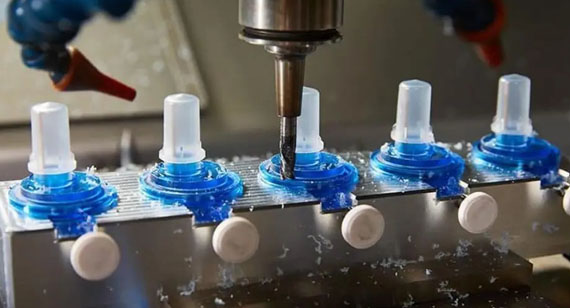
Speed
The main difference between rapid tooling and traditional tooling is the speed of production. Traditional tooling often involves long lead times for the design, creation, and testing of molds. In contrast, rapid tooling methods, such as CNC prototyping or 3D printing, drastically reduce these timelines, enabling manufacturers to go from design to production in a fraction of the time.
Tooling Cost
Traditional tooling is typically more expensive due to the complexity of mold-making and the labor-intensive processes involved. Rapid tooling, on the other hand, can be much more affordable, especially for small-scale production runs or prototypes. This is particularly beneficial for startups or companies looking to keep costs low in the early stages of product development.
Design Complexity
Traditional tooling processes often require molds to be designed for mass production, which means that the complexity of the design must be considered early on. With rapid tooling, however, manufacturers have more flexibility to experiment with complex designs. Prototypes can be adjusted easily, allowing for quick iterations without the need to completely redesign expensive molds.
Material
Rapid tooling offers more versatility in material selection. Manufacturers can use various materials, from plastics to metals, to create functional prototypes and low-volume production runs. Traditional tooling is generally more limited to specific materials that are more durable and suited for high-volume production.
Ideal Production Volume
While traditional tooling is more cost-effective for high-volume production, rapid tooling shines in low-volume and prototype applications. The ability to quickly create tools for limited runs makes rapid tooling ideal for testing market response, fine-tuning designs, or producing specialized products without the cost burden of traditional manufacturing.
Rapid tooling can be broken down into two main methods: direct and indirect. Each method has its own advantages, depending on the application and project requirements.
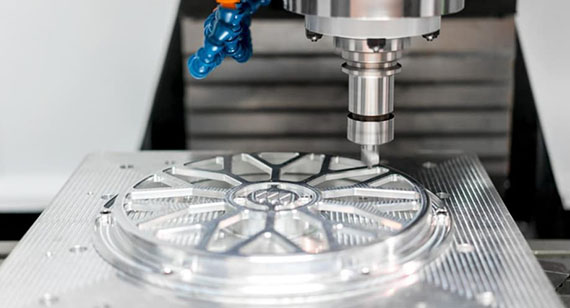
Two Methods: Direct and Indirect
Direct Method
The direct method of rapid tooling involves directly using the manufacturing process to create the mold or tool itself. This method is often employed using techniques such as CNC machining or
3D printing.
What is Direct Rapid Prototyping?
Direct rapid prototyping refers to the use of additive manufacturing or CNC machining to directly create the mold or part. This method allows for rapid testing and modification of designs in the early stages of production. It’s especially useful for creating prototypes that need to be tested for functionality and fit before full-scale production.
Advantages of Direct Method for Rapid Tooling
Disadvantages of Direct Method for Rapid Tooling
Indirect Method
The indirect method involves creating a mold or tool by first producing a prototype, which is then used to create a more durable tool or mold. This is often done using a soft mold technique, where the prototype is used to form a master mold that can be used for injection molding or casting.
What is Indirect Rapid Prototyping?
Indirect rapid prototyping uses a two-step process where a prototype is first created and then used to make a more durable mold or tool. This method allows for higher quality tools, though it generally takes more time than the direct method.
Advantages of Indirect Method for Rapid Tooling
Disadvantages of Indirect Method for Rapid Tooling
Choosing the right rapid tooling method for your project requires a careful evaluation of several critical factors. Depending on your specific needs, different methods may provide better results in terms of cost-effectiveness, speed, and design flexibility. In this section, we’ll break down the key considerations—budget, time, design complexity, and materials—to help you make an informed decision that aligns with your production goals.
When selecting a rapid tooling method, there isn’t a one-size-fits-all solution. The method you choose should balance your project’s technical requirements with practical considerations such as time and budget. Understanding the advantages and trade-offs of each rapid tooling technique—whether direct rapid prototyping or indirect methods—is essential for ensuring your tooling choice meets your specific manufacturing needs. Let’s explore how each factor can influence your decision and which rapid tooling approach will best suit your project.
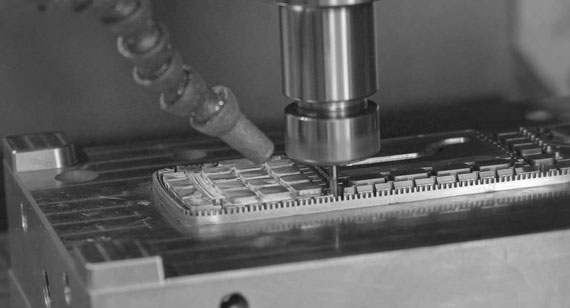
Budget
One of the first factors to consider when selecting a rapid tooling method is your project’s budget. Rapid tooling methods, such as CNC prototyping or 3D printing, often offer lower costs compared to traditional tooling methods, but the price can vary based on the complexity and materials involved.
Choosing the right method requires aligning your tooling costs with the overall project budget. For smaller, more detailed runs, a direct rapid prototyping approach may be ideal, while indirect tooling might be better suited for larger-scale productions where the investment in durable molds is necessary.
Time
Time is a critical consideration in any manufacturing process, and rapid tooling excels in providing quick solutions. How much time you have to bring your product to market or conduct prototype testing will significantly influence your choice of method.
If time is of the essence, choosing a direct method—such as CNC prototyping—ensures that you can rapidly iterate designs and move forward with production.
Design Complexity
The complexity of your design plays a significant role in determining the best rapid tooling method. More intricate, detailed designs often require specialized tooling methods capable of accurately replicating complex features.
If your design features intricate details or unique geometries, you may want to lean towards direct rapid tooling methods, such as CNC machining services or 3D printing. These methods allow for greater flexibility in design modifications and enable more accurate reproduction of complex shapes.
The materials you plan to use for your molds and parts will also impact the rapid tooling method you choose. Different materials have varying properties, which can affect the performance and durability of your tooling.
For projects that require specific material properties or durability, indirect methods may be preferred, while direct methods are ideal when material flexibility and quicker turnaround are more critical.
Conclusion
The ideal rapid tooling method for your project depends largely on factors like budget, time, design complexity, and materials. By evaluating these considerations, you can select the most suitable method to ensure efficiency, cost-effectiveness, and quality in your manufacturing process. Whether you choose direct rapid prototyping methods for faster, more affordable solutions or indirect tooling for more durable and versatile molds, understanding your specific project needs will guide your decision-making.
By choosing the right rapid tooling method, you can significantly reduce costs, speed up production timelines, and create high-quality prototypes and molds for your products. If you're looking for expert CNC machining services for your next rapid tooling project, VMT offers reliable solutions tailored to your manufacturing needs.
When creating prototype tooling, several critical factors influence the quality, functionality, and efficiency of the final product. Prototype tooling is essential for testing designs, ensuring proper fit and function, and refining your product before moving into full-scale production. In this section, we will explore two key considerations for prototype tooling: mold strength and mold smoothness. Both aspects play a significant role in achieving a successful prototype that can withstand testing conditions and provide accurate insights into the final design.
Prototype tooling serves as an intermediary step between design and production. It allows manufacturers to validate and optimize their designs, ensuring that they meet performance expectations before committing to more expensive, full-scale tooling. When developing a prototype, it's essential to ensure that the mold is both strong and smooth. These factors directly impact the accuracy, durability, and usability of the prototype during testing, which, in turn, influences the quality of the final product. Understanding how mold strength and mold smoothness affect the prototyping process is vital for making informed decisions about materials and production methods.

Mold Strength
Mold strength is one of the most important considerations when creating prototype tooling. The strength of the mold determines how well it can withstand the stresses and forces encountered during the molding process. A mold with inadequate strength may deform or break during testing, leading to inaccurate prototypes and wasted resources.
Ultimately, mold strength ensures that your prototypes can function as intended during testing, providing reliable data on their performance before full-scale production begins.
Mold Smoothness
Mold smoothness refers to the quality of the surface finish of the mold and, by extension, the parts it produces. A smooth mold surface is essential for ensuring that the prototype parts have a high-quality finish with minimal defects such as surface roughness, marks, or inconsistencies. A smooth mold allows for cleaner and more accurate part replication, which is particularly important when dealing with prototypes that require precise aesthetic or functional characteristics.
In summary, mold smoothness is crucial not only for the look and feel of the prototype but also for ensuring that parts fit correctly, function as expected, and meet the performance criteria of the final product. Ensuring high mold smoothness can make a significant difference in the quality and usability of your prototypes.
Conclusion
When considering prototype tooling, both mold strength and mold smoothness are vital elements that can determine the success of your prototype. Strong molds ensure that the tooling can handle the stresses of the manufacturing process without failure, while smooth molds guarantee that your prototypes are free from defects and accurately represent the final product. These factors, when combined with the right tooling method, ensure that your prototypes are both functional and reliable, allowing for valuable testing and validation before full-scale production. Whether you're using CNC prototyping, 3D printing, or traditional tooling, carefully considering these aspects will help optimize your prototype tooling and lead to better results.
Rapid tooling offers numerous benefits to manufacturers, especially when it comes to speeding up the production process, reducing costs, and testing product designs early in the development cycle. Unlike traditional tooling methods, which can be time-consuming and expensive, rapid tooling provides an agile and cost-effective way to create prototypes and molds for low-to-medium production runs. Let’s explore the primary advantages of rapid tooling and how they can enhance your manufacturing processes.
Rapid tooling is an innovative approach that significantly accelerates the production process by allowing manufacturers to quickly develop molds and prototypes for testing. By leveraging advanced technologies like CNC prototyping, 3D printing, and CNC machining, companies can rapidly create high-quality molds for injection molding, thermoforming, and other manufacturing processes. These faster methods come with a range of advantages, such as reduced development costs, quicker time to market, and the ability to customize molds for specific applications.
In this section, we will explore the core benefits of rapid tooling and how they can streamline your manufacturing efforts.
Reduced Product Development Costs
One of the most significant advantages of rapid tooling is the reduction in product development costs. Traditional tooling often requires expensive materials and extensive labor hours to create prototypes and molds. In contrast, rapid tooling methods, such as CNC prototyping and 3D printing, can produce high-quality molds with less material waste, lower labor costs, and shorter production timelines.
By reducing product development costs, rapid tooling allows companies to allocate resources more efficiently, making the development of new products more affordable.
Quick Time to Market
Time is a critical factor in the competitive world of manufacturing. Rapid tooling accelerates the prototyping and production process, allowing companies to get their products to market faster. With traditional tooling methods, creating molds can take weeks or even months, delaying the release of new products. However, with rapid tooling, manufacturers can significantly shorten this timeline.
By cutting down on development time, rapid tooling enables companies to respond to market demands more quickly, helping them stay ahead of competitors.
Mold Customization
Customization is another key benefit of rapid tooling. Unlike traditional methods, which may require costly changes to the mold during the production process, rapid tooling provides greater flexibility in mold design. This allows manufacturers to create molds that are tailored to their exact specifications, ensuring that the final product meets all performance and aesthetic requirements.
Customization in mold design helps manufacturers achieve high-quality products that meet the specific needs of their customers, making rapid tooling a valuable asset in precision-driven industries.
Thoroughly Test Design and Functionality
Rapid tooling allows manufacturers to test the design and functionality of their products before committing to full-scale production. By creating prototypes and testing them under real-world conditions, manufacturers can identify and address design flaws early in the development process.
The ability to thoroughly test designs and functionality before full-scale production helps to minimize the risk of defects and ensures that the final product performs as expected.
Increased ROI
Investing in rapid tooling can result in a significant increase in return on investment (ROI). By reducing development costs, accelerating time to market, and improving product quality through faster testing and iteration, manufacturers can achieve higher profits and more successful product launches.
By streamlining the production process, rapid tooling maximizes ROI, ensuring that companies can capitalize on their investments more effectively.
While rapid tooling offers numerous advantages, there are certain limitations when it comes to injection molding. These limitations must be considered before choosing rapid tooling for your manufacturing process, especially if you are working with high-volume production or complex designs.
Despite the many benefits, there are some challenges associated with using rapid tooling, particularly in injection molding. These limitations often involve the durability of the molds and the cost of the process compared to traditional methods. However, by understanding these limitations, manufacturers can make informed decisions about whether rapid tooling is suitable for their needs.
Higher Injection and Labor Costs
Although rapid tooling is generally more cost-effective for small production runs, the cost of injection molding using rapid tooling can sometimes be higher than traditional methods, particularly for larger volumes. This is due to the higher costs of materials used in the rapid tooling process, as well as the added labor required for mold preparation and post-processing.
These added costs should be weighed against the benefits of rapid tooling to determine whether it is the most economical choice for your specific project.
Shorter Mold Lifecycle
Another limitation of rapid tooling is the shorter lifecycle of the molds compared to traditional molds. While rapid tooling is excellent for low-to-medium production runs, the molds created through these methods tend to wear out faster and are less durable than traditional molds.
For manufacturers looking to produce high volumes of parts, the shorter mold lifecycle of rapid tooling may not be ideal, making traditional tooling a better long-term solution.
Conclusion
While rapid tooling offers numerous advantages, such as reduced product development costs, quick time to market, and greater mold customization, it is important to consider the potential limitations, especially in the context of injection molding. Understanding these factors—such as higher injection and labor costs and the shorter mold lifecycle—will help manufacturers decide when rapid tooling is the best choice for their project. By carefully evaluating these pros and cons, you can determine how to integrate rapid tooling effectively into your manufacturing process to achieve the best possible outcomes.
In the world of modern manufacturing, rapid tooling and rapid prototyping are often used interchangeably, but they serve different purposes and are applied in different stages of product development. Understanding the distinction between the two processes is essential for manufacturers looking to streamline their production cycle, reduce costs, and improve efficiency. Let's break down the differences between these two approaches.
Both rapid tooling and rapid prototyping are part of the broader category of additive manufacturing techniques, designed to speed up the product development process. However, each approach has unique applications and benefits. Rapid prototyping focuses on creating a prototype or a model of the final product, usually for testing or evaluation. Rapid tooling, on the other hand, focuses on the creation of molds, dies, or tools for production, helping to move a design from the prototype stage to actual manufacturing.
In this section, we’ll explore the core differences between rapid tooling and rapid prototyping to help you understand when to use each technique in your manufacturing process.
Purpose and Application
While rapid prototyping is mainly used for testing and evaluation, rapid tooling is aimed at facilitating mass production. If you’re looking to create a physical part for real-world applications, you would choose rapid tooling.
Materials Used
The key difference here is that rapid tooling uses materials designed for durability and long-term use, while rapid prototyping focuses on materials that are easier and cheaper to produce, often sacrificing strength for speed.
Production Volume
While rapid prototyping helps refine a design, rapid tooling is the next step, ensuring that the design can be manufactured at scale.
Speed and Cost
Summary
In summary, rapid prototyping and rapid tooling are both valuable techniques in modern manufacturing, but they serve different purposes:
Understanding when to use each process depends on your project’s stage, budget, and production requirements. While rapid prototyping is a great solution for testing, rapid tooling is the next step to ensure efficient, cost-effective production of your product.
Here's a comparison between Rapid Tooling and Rapid Prototyping, and a table outlining the differences between Soft Tooling and Hard Tooling:
Comparison Between Rapid Tooling and Rapid Prototyping
| Aspect |
Rapid Prototyping |
Rapid Tooling |
| Purpose | Creates physical models for testing, evaluation, and design iteration | Creates molds, dies, or tooling components for production |
| Materials | Low-cost materials like PLA, ABS, SLA resins | Durable materials like aluminum, steel, composites |
| Production Volume | Small quantities (single prototype or small batch) | Medium to large production volumes |
| Speed | Fast; designed for quick concept validation | Fast, but slower than prototyping; used for full-scale production |
| Cost | Lower cost for quick prototypes | Higher initial cost due to durable materials and tooling creation |
| Applications | Product design testing, concept validation | Mass production, mold creation for manufacturing processes |
| Durability | Not durable; used for short-term evaluation | Durable, designed for long-term use in production |
When discussing rapid tooling, it’s important to understand the difference between soft tooling and hard tooling. These two terms refer to the type of mold or die used in production and can have a significant impact on the production process, cost, and speed.
Soft tooling and hard tooling represent two ends of the spectrum when it comes to mold production. Both play a role in rapid tooling, but each has its own advantages and limitations depending on your project’s needs. Understanding these differences can help you choose the right approach for your production.
Soft Tooling
Soft Tooling is typically made from materials such as aluminum or composite metals, which are easier and quicker to work with than traditional steel. These materials allow for faster production of molds that can be used for limited-volume production. Soft tooling is ideal for prototype testing, low-volume production runs, and projects with tight timelines.
Advantages of Soft Tooling:
Disadvantages of Soft Tooling:
Hard Tooling
Hard Tooling refers to molds made from durable materials like steel, which are used for high-volume production runs. Hard tooling is more expensive and time-consuming to produce, but it provides greater durability and is able to handle larger volumes of parts without significant wear.
Advantages of Hard Tooling:
Disadvantages of Hard Tooling:
Choosing Between Soft Tooling and Hard Tooling
The decision between soft tooling and hard tooling depends on factors such as production volume, budget, and timeline. Soft tooling is best suited for prototypes, short production runs, and when quick changes are needed, while hard tooling is better for high-volume, long-term production where durability and consistency are crucial.
Soft Tooling vs. Hard Tooling
| Feature |
Soft Tooling |
Hard Tooling |
| Material Used | Aluminum, composites, or softer metals | Steel, hardened metals |
| Production Time | Faster production time | Longer production time for mold creation |
| Cost | Lower initial cost | Higher upfront costs |
| Durability | Less durable, suitable for limited production | Very durable, suitable for high-volume production |
| Ideal For | Prototyping, low-volume production, quick changes | High-volume, long-term production |
| Flexibility | Highly flexible, easy to modify | Limited flexibility, difficult to modify once made |
| Applications | Short production runs, testing, low-volume runs | Mass production, long-term use in manufacturing |
| Advantages | Quick, cost-effective, adaptable | Consistent quality, very durable, suitable for large volumes |
| Disadvantages | Not suitable for high-volume production, limited lifespan | High cost, less flexibility, longer setup times |
These tables should give a clearer side-by-side comparison of rapid tooling vs. rapid prototyping, as well as soft tooling vs. hard tooling for manufacturing decisions. Let me know if you need further adjustments!
Rapid tooling has revolutionized the manufacturing landscape by providing faster and more cost-effective ways to produce parts and components for various industries. Here are some key applications of rapid tooling in different manufacturing processes:
Introduction: Injection molding is one of the most common manufacturing processes where molten material is injected into a mold cavity to form solid parts. Rapid tooling plays a significant role in injection molding, enabling faster mold creation and reducing lead times for production.
How It Works: Using rapid tooling techniques, manufacturers can create mold cavities in a fraction of the time compared to traditional tooling methods. Materials such as aluminum or composite-based tooling can be used to produce molds quickly, ideal for short to medium production runs.
Benefits:
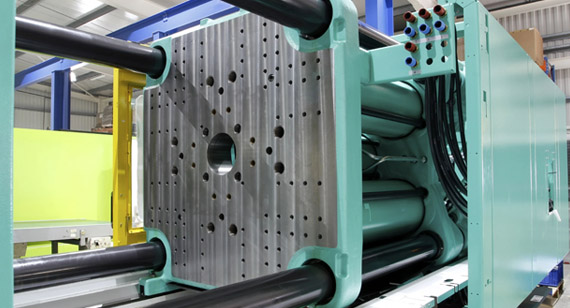
Thermoforming
Introduction: Thermoforming involves heating a plastic sheet until soft, then forming it over a mold. Rapid tooling allows for faster production of molds, enabling companies to produce high-quality thermoformed parts in a shorter time.
How It Works: With rapid tooling, manufacturers use materials such as aluminum or other composites to create molds that facilitate the thermoforming process. These molds are often less expensive and can be produced quickly, making rapid tooling ideal for prototyping and low-volume production.
Benefits:
Overmolding and Insert Molding
Introduction: Overmolding and insert molding are processes where two or more materials are molded together to form a single part. In overmolding, a part is first molded and then a secondary layer is added, while insert molding involves placing inserts (like metal components) into a mold before the plastic is injected.
How It Works: Rapid tooling can be used to create molds that allow for efficient overmolding and insert molding. The flexibility of rapid tooling allows for the use of different materials in the same mold, speeding up the production process.
Benefits:
Compression Molding
Introduction: Compression molding is a method in which a heated material is placed into a mold cavity and then compressed to form a part. This process is often used for producing rubber, plastic, or composite parts.
How It Works: In compression molding, rapid tooling allows manufacturers to quickly produce molds for both high- and low-volume runs. The use of rapid tooling also reduces lead times and tooling costs compared to traditional compression molding methods.
Benefits:
Introduction: Casting is a manufacturing process where a material, often metal or plastic, is poured into a mold and allowed to solidify. Rapid tooling for casting enables quick production of molds, which is especially valuable for small-batch manufacturing or prototyping.
How It Works: With rapid tooling, manufacturers can create molds for casting processes like sand casting, die casting, or investment casting. The molds are often made of aluminum or other materials that offer a balance between cost and speed of production.
Benefits:
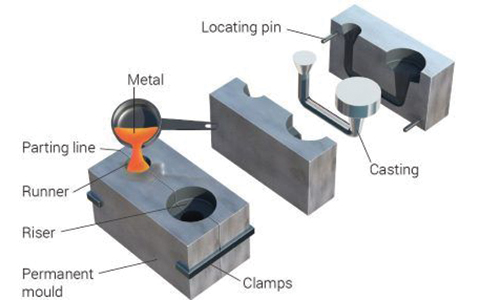
Introduction: Sheet metal forming is the process of shaping metal sheets into parts using a variety of techniques like stamping, bending, and punching. Rapid tooling for sheet metal forming enables faster creation of forming tools such as dies, punches, and molds.
How It Works: Rapid tooling in sheet metal forming uses technologies like CNC machining and additive manufacturing to create tools quickly. This speeds up the entire forming process, particularly for low to medium-volume production runs.
Benefits:
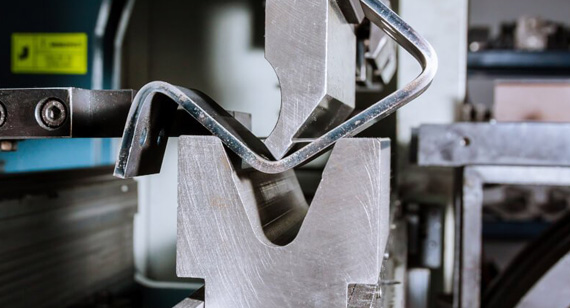
Conclusion
Rapid tooling has found applications across various manufacturing processes, including injection molding, thermoforming, overmolding, insert molding, compression molding, casting, and sheet metal forming. Its ability to reduce lead times and lower production costs has made it an invaluable tool for companies looking to produce high-quality parts in shorter cycles and at lower costs.
If you're considering rapid tooling for your next project, it's crucial to understand the specific requirements of each process and how rapid tooling can enhance efficiency. Whether you're in need of quick prototyping, low-volume production, or fast turnarounds for complex parts, rapid tooling can provide the flexibility and speed you need.
Rapid tooling is a key manufacturing process that enables companies to quickly produce molds, dies, or other tooling components used for production. This process is especially beneficial for prototyping, small to medium production runs, and testing designs before committing to traditional tooling methods. There are several methods for creating rapid tooling, with 3D printing and CNC machining being two of the most commonly used techniques. Here's a closer look at each:
When it comes to making rapid tooling, the goal is to produce functional tooling components as quickly and efficiently as possible, often with minimal cost. Rapid tooling is commonly used for low-volume manufacturing, prototype development, and testing of design functionality before committing to large-scale production. The methods used to make rapid tooling—such as 3D printing and CNC machining—allow manufacturers to reduce lead times, improve accuracy, and lower overall costs. Let's explore these methods in more detail.
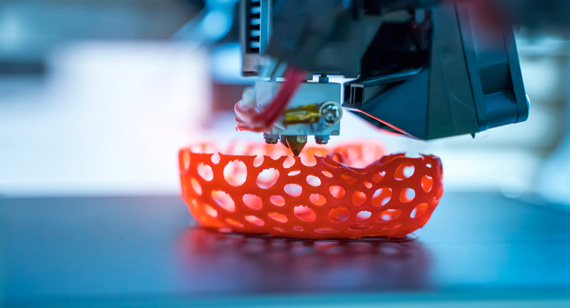
What is 3D Printing for Rapid Tooling?
3D printing, also known as additive manufacturing, is a revolutionary technique used to build objects layer by layer directly from a digital file. In the context of rapid tooling, 3D printing is used to produce molds or tooling components quickly and at a lower cost compared to traditional methods. This technique is especially useful for prototyping, low-volume production, and when high levels of complexity are required.
How It Works:
Benefits of 3D Printing for Rapid Tooling:
Limitations:

What is CNC Machining for Rapid Tooling?
CNC (Computer Numerical Control) machining is a subtractive manufacturing process where material is removed from a solid block to create the desired shape. This process can be used to produce molds, dies, or other tooling components with high precision and excellent material properties. CNC machining is a more traditional and established method for making rapid tooling, offering superior durability and performance compared to 3D printing.
How It Works:
Benefits of CNC Machining for Rapid Tooling:
Limitations:
Conclusion
Both 3D printing and CNC machining offer valuable methods for making rapid tooling, each with its own advantages and limitations. 3D printing is ideal for quick, low-cost prototyping and small production runs, especially when complex geometries are involved. On the other hand, CNC machining excels in producing precise, durable tooling components suitable for medium to high-volume production, especially when materials like metals are required.
When choosing the best rapid tooling method for your project, it’s essential to consider factors such as material strength, production volume, complexity of design, and budget. By understanding the strengths of each technique, manufacturers can make informed decisions that align with their project needs.
Here’s the comparison of 3D printing rapid mold and CNC machining rapid mold manufacturing process in a table format:
| Aspect |
3D Printing Rapid Mold |
CNC Machining Rapid Mold |
| Introduction | 3D printing is an additive manufacturing process that builds molds layer by layer from digital designs. It’s often used for low-volume production and prototyping. | CNC machining is a subtractive manufacturing method where material is removed from a solid block to create molds. It's ideal for high precision and durable parts. |
| Method | Additive Manufacturing: Molds are built by adding material layer by layer based on a digital file. | Subtractive Manufacturing: Material is cut away from a larger block to form the mold. |
| Required Equipment | 3D printer (FDM, SLA, or SLS depending on the material used). | CNC machine (milling machine, lathe, or multi-axis machining center). |
| Material | Plastics (ABS, resin, nylon), metals (for high-end 3D printing like DMLS). | Metals (aluminum, steel), plastics, composites. |
| Molding Cost | Lower initial setup costs; however, material and part complexity may affect pricing. | Higher setup costs due to machining setup, tooling, and material costs, but often more efficient for large volumes. |
| Final Part Delivery Time | Fast turnaround (hours to a few days) for simple parts and prototypes. | Moderate turnaround (days to a week or more) due to setup and machining time. |
| Ideal Output | Low to medium volume production (up to a few hundred parts). Suitable for prototypes or parts with complex geometries. | Medium to high-volume production; best suited for durable molds or parts requiring high precision. |
| Application | Prototyping, low-volume production, complex parts (e.g., small batches, intricate designs), experimental molds. | High-precision tools, durable molds for injection molding, thermoforming, die casting, and functional parts. |
This table compares the two methods across key factors like equipment, material, cost, and ideal use cases, making it easier to decide which method suits a particular project or application.
3D printed rapid tooling is a process that enables manufacturers to quickly create molds and tooling components by utilizing additive manufacturing techniques. This method is ideal for prototype development, low-volume production, and when time and cost efficiency are crucial. Here's a detailed breakdown of how the 3D printed rapid tooling process works:
The 3D printed rapid tooling process involves creating tooling components such as molds, dies, or jigs using 3D printing technologies. It enables faster turnaround times, reduces tooling costs, and offers design flexibility, especially for complex shapes. Compared to traditional tooling, 3D printed tooling is particularly advantageous for prototyping and low-volume production due to its shorter lead times and less expensive setup costs. This process has grown in popularity across industries such as automotive, aerospace, and medical devices for producing both functional prototypes and final-use parts.
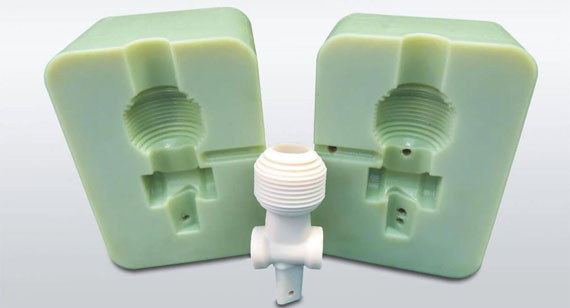
1. Design
The first step in the 3D printed rapid tooling process is to design the tooling component using Computer-Aided Design (CAD) software. The design is crucial as it defines the mold's shape, features, and other geometric details.
Steps Involved in Design:
Once the design is finalized, it is converted into a file format compatible with 3D printers, commonly STL (Stereolithography) or AMF (Additive Manufacturing File) formats.
2. 3D Printing
In this phase, the 3D printer builds the tooling component layer by layer using the material specified in the design.
How 3D Printing Works for Rapid Tooling:
The printing process continues until the tooling component is fully formed, often taking a few hours to a few days, depending on the part's size and complexity.
3. Manufacturing
Once the part is printed, it is technically ready for use in certain applications. However, in many cases, additional work is required before the part can be put into production use.
Steps Involved in Manufacturing:
4. Post-Processing
Post-processing is a critical step in 3D printed rapid tooling to ensure the final part is ready for use. This phase involves refining the part's appearance, functionality, and performance.
Post-Processing Steps:
Post-processing may also include modifying the tooling to optimize it for production or to incorporate additional features that were not possible during the initial printing stage.
Conclusion
The 3D printed rapid tooling process is an efficient and flexible approach for creating tooling components quickly and at a lower cost than traditional methods. The steps involved—from design to post-processing—ensure that tooling parts are precisely manufactured, thoroughly tested, and ready for functional use. This method is particularly valuable for industries that require rapid prototyping, low-volume production, and complex tooling designs that traditional methods can't achieve easily.
Choose Your Rapid Tooling Service
Choosing the right rapid tooling service is a critical decision for manufacturers who want to streamline product development, reduce costs, and bring products to market faster. With various options available, selecting the right service requires a deep understanding of your project’s specific needs, including the complexity of the design, material requirements, production volume, and timeline. Here’s a guide to help you make the best choice for your rapid tooling needs.
1. Evaluate Your Project’s Requirements
Before selecting a rapid tooling service, it’s essential to evaluate the specific needs of your project:
2. Consider Different Rapid Tooling Methods
Understanding the different rapid tooling methods available can guide your decision:
3. Assess Service Capabilities and Support
Look for rapid tooling services that offer comprehensive support throughout the project lifecycle. Key aspects to assess include:
4. Compare Pricing and Turnaround Times
Cost and timeline are often crucial factors in the decision-making process for rapid tooling services:
5. Select a Reliable Service Provider
When choosing a rapid tooling service, it's important to select a trusted provider known for delivering high-quality results. At VMT CNC, we offer rapid tooling services using advanced technologies like CNC machining and 3D printing. Our team can help you evaluate the best approach based on your project requirements, ensuring you receive the best possible tooling for your application. We also provide post-processing options and fast turnaround times to meet your deadlines.
Choosing the right rapid tooling service is key to achieving fast, cost-effective production with high-quality results. By carefully considering your project’s requirements, evaluating different methods, and selecting a reliable service provider, you can ensure that you get the best tooling solution for your needs. At VMT CNC, we offer tailored services and expertise to help bring your projects to life quickly and efficiently.
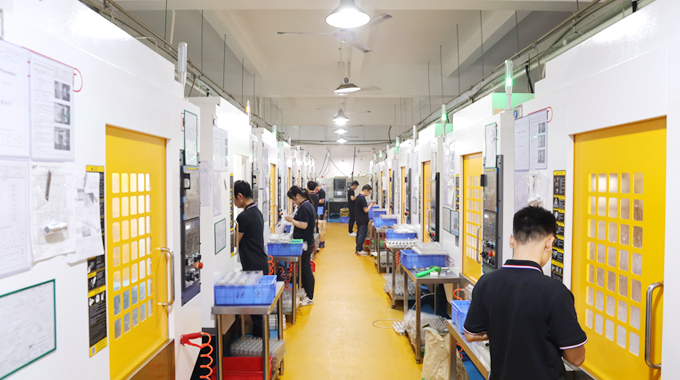
Rapid tooling is revolutionizing manufacturing by enabling faster, more affordable product development. Whether you choose direct or indirect methods, understanding the advantages and limitations of each process will help you make informed decisions for your next project. If you're considering CNC machining services for rapid tooling, VMT’s expertise in CNC prototyping and CNC machining ensures that your manufacturing needs are met with precision and efficiency.
1. What Does Rapid Tooling Mean?
Rapid tooling refers to the quick creation of molds or tooling used for manufacturing processes, typically in low-volume production or prototyping. It utilizes technologies like 3D printing and CNC machining to create tools faster and at a lower cost compared to traditional tooling methods.
2. What is the Difference Between Rapid Tooling and Traditional Tooling?
The key difference lies in speed and cost. Rapid tooling is designed to be produced quickly and cost-effectively, often using 3D printing or CNC machining, making it ideal for prototypes or small production runs. Traditional tooling, on the other hand, involves longer lead times, higher costs, and is best suited for high-volume production.
3. Why is Rapid Prototyping So Important in Manufacturing?
Rapid prototyping allows manufacturers to quickly test and iterate on designs before committing to full-scale production. This helps reduce product development time, lower costs, and identify design flaws early in the process, leading to better final products.
4. What is the Difference Between Rapid Prototyping and Rapid Tooling?
Rapid prototyping focuses on creating a prototype or model of a design to test and validate concepts. It is often used early in the product development cycle. Rapid tooling, however, is used to create molds or tooling for manufacturing processes and can be used for small-scale production or testing with the final materials.
5. What is Rapid Tooling?
Rapid tooling is the process of quickly creating molds, dies, or other tooling components that are used in manufacturing. It leverages advanced techniques like 3D printing and CNC machining to reduce production time and cost, making it ideal for prototypes, low-volume production, or testing.
6. What Are the Different Types of Tools?
The different types of tools used in manufacturing include:
7. What is the Difference Between Tooling and Tooling?
This appears to be a typo. If you meant to ask about tooling vs. tooling, the distinction depends on context (e.g., types of tooling, applications, or specific industries).
8. What is a DB Tool?
A DB tool is short for "Database tool," which refers to a software or tool used for managing and manipulating databases, primarily in software development. In manufacturing, however, the term might refer to specific types of tools used for database management or automation.
9. How Many Types of Tools Are There?
There are several categories of tools, including:
Assembly tools Each category is designed for specific tasks in manufacturing, construction, or other industries.
10. What Are the 3 Classifications of Tools?
Tools are generally classified into three categories:
11. What is Rapid Prototyping Technology?
Rapid prototyping technology includes a variety of methods for creating a physical model of a product or part directly from a computer-aided design (CAD) file. Technologies like 3D printing, CNC machining, and laser cutting are common methods used in rapid prototyping.
12. What Are the Classifications of Rapid Tooling?
Rapid tooling can be classified into two main types:
13. What Are the Benefits of Rapid Prototyping Tooling?
The benefits of rapid prototyping tooling include:
14. What Impact Do Rapid Prototyping and Tooling Have on Product Development?
Rapid prototyping and tooling have revolutionized product development by enabling faster, more flexible, and cost-effective processes. They allow manufacturers to quickly create and test prototypes, reducing errors and improving the final product before mass production. This leads to quicker market entry and higher-quality products.
15. What is RPT in Engineering?
RPT stands for Rapid Prototyping Technology, which refers to the use of various technologies to quickly create prototypes and tooling. In engineering, RPT enables engineers to test and validate designs quickly before proceeding with full-scale manufacturing.
16. What Does CAD Stand for in 3D Printing?
In 3D printing, CAD stands for Computer-Aided Design. It refers to the software used to design 3D models that can be directly printed by a 3D printer. CAD software is essential in creating precise and detailed models for rapid prototyping and tooling.
